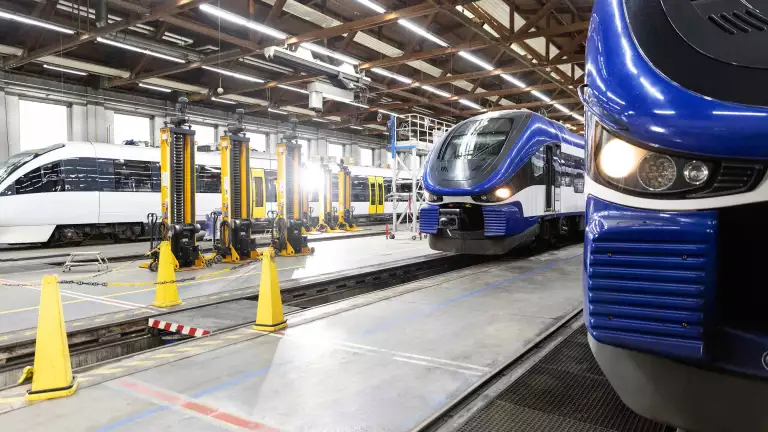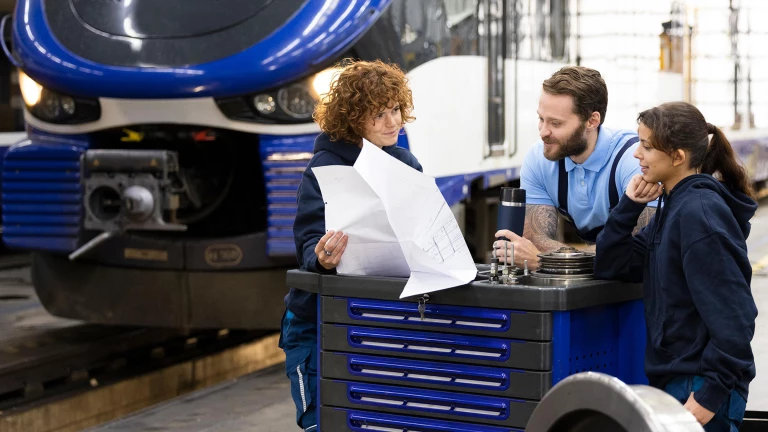
Center for Digital in Transportation
We partner with rail operators to deploy digital levers, including digital platforms, predictive analytics, advanced monitoring, and automation of operations.

We help rail operators redefine their role as a low-carbon solution so they can win new business from environmentally conscious travelers, shippers, and governments.
Our rail experts also help our clients harness digitization so rail operators can improve on-time performance and create a better connection with passengers and shippers. And we help clients use advanced analytics to uncover new opportunities in different parts of the transportation value chain.
Our rail operations consulting team partners with urban transportation, passenger rail, rail freight, rail infrastructure, rail maintenance, and rail technology companies.
Our advice offers deep expertise to many of the world’s biggest rail operators—and broad experience in digital transformation across industries.

We partner with rail operators to deploy digital levers, including digital platforms, predictive analytics, advanced monitoring, and automation of operations.

Through this center, we help clients address such shared challenges as congestion, pollution, and the development of new technologies. We help clients connect with the right stakeholders at each stage of the value chain to take new ideas from the drawing board to the street.

Helping a National Rail Operator Serve as an Essential Contributor to a National Climate Management Program. Our rail operations consulting team gathered the evidence needed to position the company at the forefront of its nation’s sustainability strategy, boosting its standing with the government, businesses, and consumers.

Identifying and Prioritizing New Business Models That Could Be Developed from a National Rail Carrier’s Data Collection. We helped the carrier draw on best practices from several industries to estimate the likely value generated by the proposed models.

BCG X’s technologists, scientists, programmers, engineers, and designers partner with our rail industry experts to help develop AI-powered solutions and machine-learning algorithms that our clients own and integrate into their unique technology stack.

Rail infrastructure and rail transport firms collaborate with our specialty business BCG Platinion to perfect the tech side of transformation. We assist with IT architecture design, digital transformation, risk management services, cybersecurity, and implementation management.

B Capital Group, a global venture capital firm in partnership with BCG, invests in business-to-business startups during their early expansion stage and fosters partnerships between entrepreneurs and corporate leaders. We enjoy particular success connecting entrepreneurs with corporations seeking to adopt emerging technologies.

Our tool provides decision makers with a powerful cockpit for steering operational choices. The tool compiles data on 7 industries, 25 market segments and subsegments, and 31 financial KPIs. Get a complete picture of the industry’s forecast trends and assess your company’s relative performance.

Reducing operating costs is critical for achieving performance objectives, but rail executives must select the right levers to tackle their distinctive challenges.

Rail operators can combat rising costs by leveraging their existing data for maintenance planning and execution or by adopting advanced technologies to produce new data sources.

When buying rolling stock, rail operators should consider the full range of life-cycle costs—including maintenance, energy, and administrative expenses.

As public transit systems grapple with the aftermath of COVID-19, they must confront declining ridership, labor shortages, and supply chain obstacles. Despite the farebox, maintenance, and talent challenges, there are opportunities to seize.